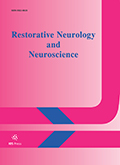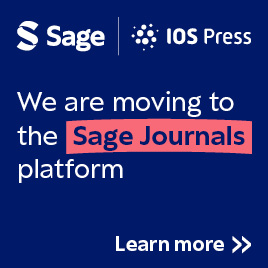Authors: Ebrahimi-Monfared, Mohsen | Sharafkhah, Mojtaba | Abdolrazaghnejad, Ali | Mohammadbeigi, Abolfazl | Faraji, Fardin
Article Type:
Research Article
Abstract:
Background: Melatonin is known to be effective in curing migraine. Objective: This study aimed to investigate the therapeutic effect of melatonin versus sodium valproate in the prophylaxis of chronic migraine. Methods: This randomized, double-blind, placebo-controlled clinical trial included patients with chronic migraine who were divided into three equal sized groups, and baseline therapy with nortriptyline (10–25 mg) and propranolol (20–40 mg) was used. Patients in groups A, B, and C were adjunctively treated daily with 3 mg melatonin, 200 mg sodium valproate, and a placebo, respectively. The patients underwent treatment for 2 months and follow-up was done at baseline (baseline
…), first (I ) and second month (II ). Attack frequency (AF), attack duration, attack severity, Migraine Disability Assessment (MIDAS) score (within 3 months in two steps), analgesic intake, and drug side effects between the groups and during follow-up were compared. Results: The mean of monthly AF (melatonin: baseline: 4.2, I: 3.1, II: 2.5, p = 0.018; valproate: baseline: 4.3, I: 3.1, II: 2.3, p = 0.001; placebo: baseline: 4.1, I: 3.8, II: 3.8 p = 0.211), attack duration (hr) (melatonin: baseline: 19.8, I: 10.1, II: 8.7, p < 0.001; valproate: baseline: 19.5, I: 10.2, II: 8.8, p < 0.001; placebo: baseline: 19.6, I: 15.4, II: 14.1, p = 0.271), attack severity (melatonin: baseline: 7.3, I: 5.4, II: 3.5, p < 0.001; valproate: baseline: 7.4, I: 5.3, II: 3.4, p = 0.000; placebo: baseline: 7.3, I: 6.4, II: 6, p = 0.321), and MIDAS score (melatonin: baseline: 15.2, II: 8.9, p = 0.005; valproate: baseline: 16.1, II: 8.3, p = 0.001; placebo: baseline: 16, II: 12.1, p = 0.44), were significantly reduced in the melatonin and sodium valproate groups, but not in the placebo groups. Adverse events were reported in 11 patients (10.47%): 2 (5.71%) during melatonin treatment, 8 (22.85%) during valproate, and 1 (2.85%) during placebo. Conclusion: The adjuvant treatment with melatonin was found to be superior to the placebo and had the same clinical efficacy as sodium valproate, but with higher tolerability. Melatonin may prove to be an efficient substitute for sodium valproate, as a chronic migraine prophylaxis.
Show more
Keywords: Migraine disorders, melatonin, valproic acid
DOI: 10.3233/RNN-160704
Citation: Restorative Neurology and Neuroscience,
vol. 35, no. 4, pp. 385-393, 2017
Price: EUR 27.50




